Babies of all kinds, from all sorts of species, are invariably cute. Baby goats are no exception to this rule! In fact, we think that the baby goat is one of the cuter animal babies out there. We’ve compiled all the facts there is to know about these quirky animals.
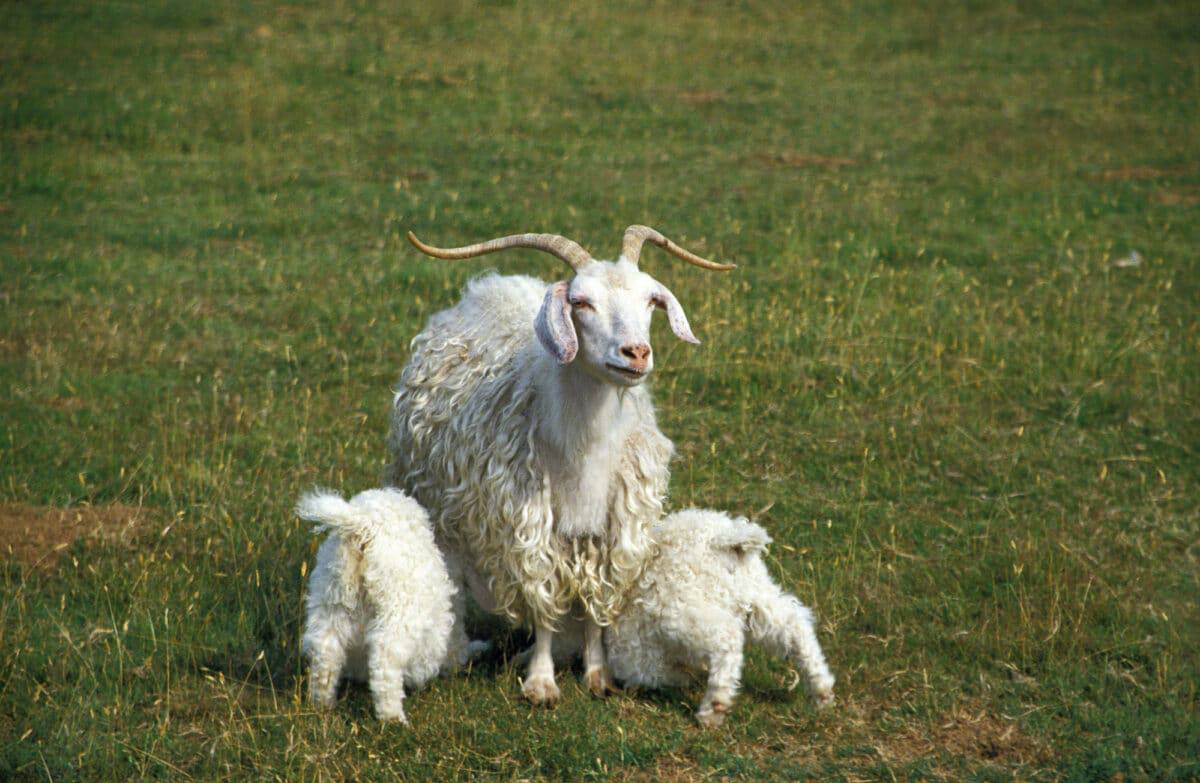
Most humans love animal company, especially when it comes to baby goats – no one can deny their absolute adorableness. Goats are actually one of the animals that humans interact with the most.
Did you know the baby goat is called a kid? Let’s get to know the kid a little bit better!
These hoofed creatures have many characteristics that match other mammals. At the same time, though, they have several features that distinguish them from all the other mammals.
Scientific Classification Of Baby Goat
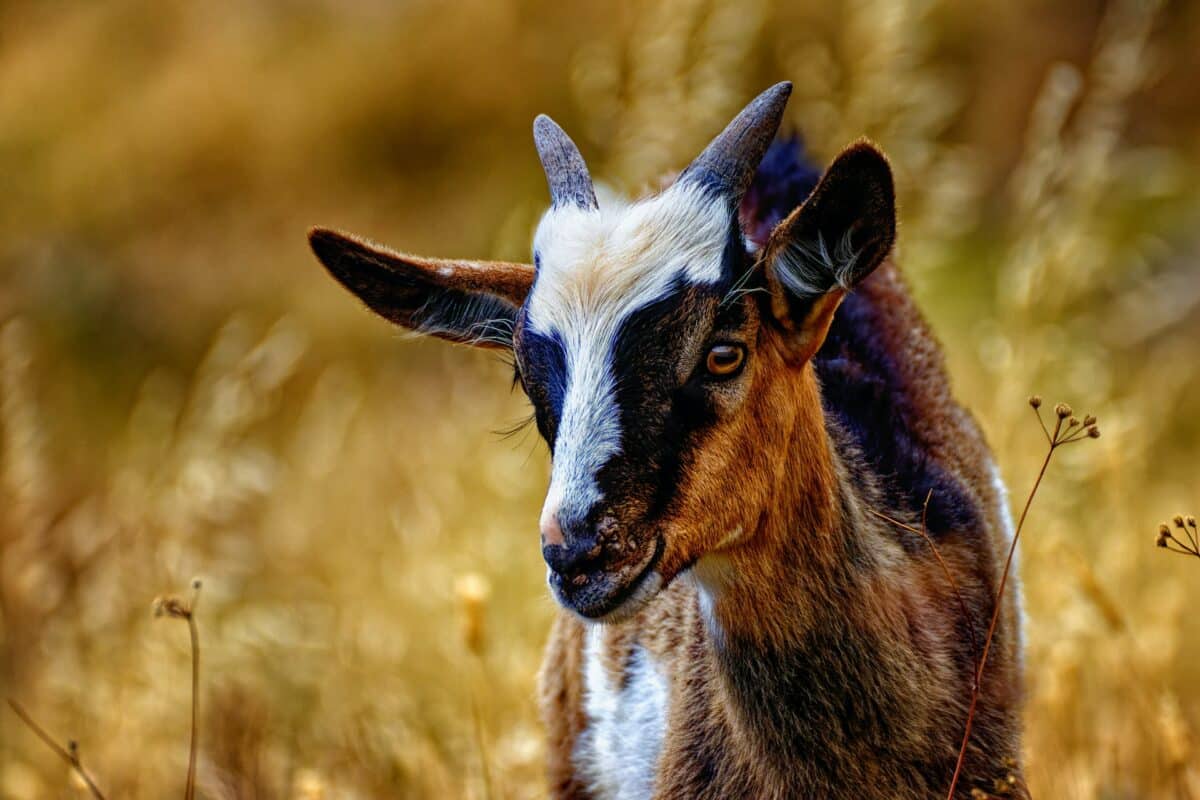
Below is the scientific classification of baby goats:
Kingdom
The baby goat belongs to the kingdom Animalia.
Phylum
Chordata is the phylum to which the kid belongs to.
Class
A baby goat forms part of the class Mammalia.
Order
The kid belongs to the Artiodactyla order.
Family
Bovidae is one of the animal families in which animals with horns are included, so therefore goats belong to this family.
Subfamily
Among many subfamilies, the goat is categorized as Caprinae.
Tribe
Caprini is the goat tribe-title.
Genus
Capra is the genus in which goats are listed.
Species
C. hircus is the goat species in scientific terms.
Other Names Of Baby Goat
As previously stated, a baby goat is also known as a “kid,” not to be confused with human kids! More than one baby goat or simply a group of baby goats is known as a herd or tribe of kids.
Yes, it is similar to the human baby name, and it is the only animal whose babies have this title.
Baby Goat Weight
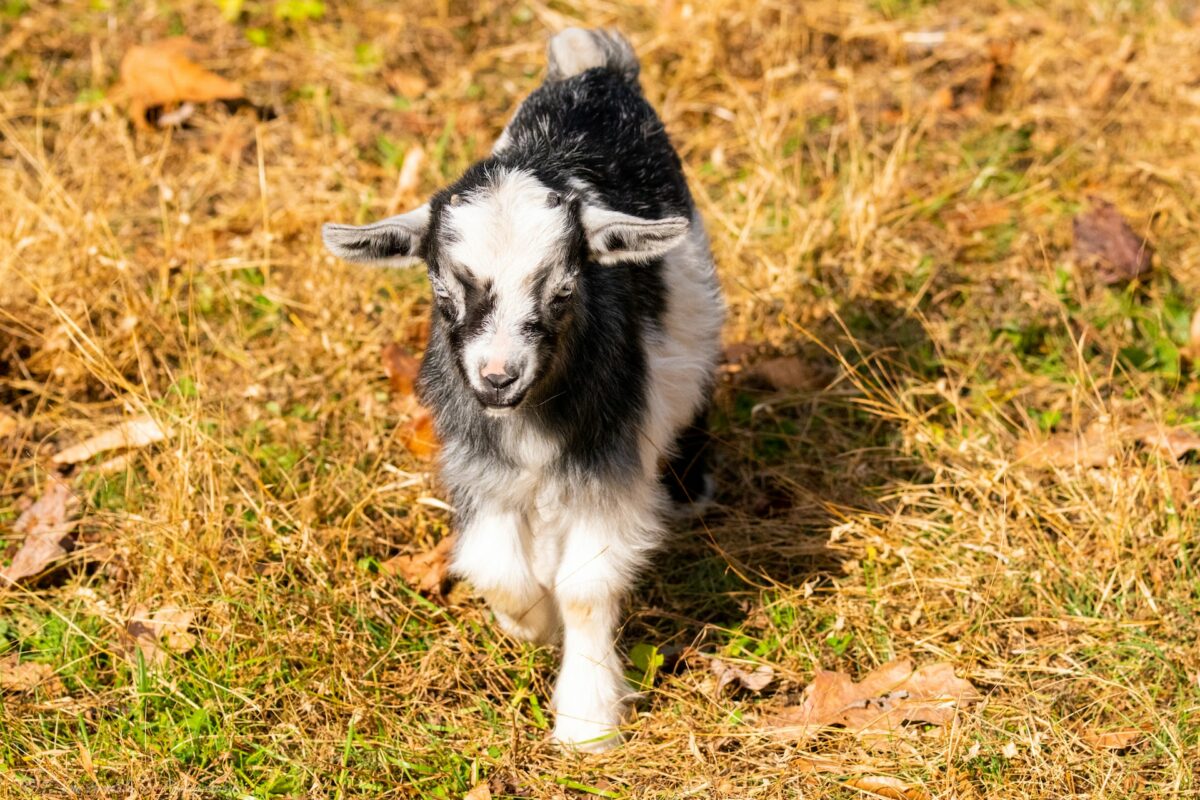
At the time of birth, the weight of an average kid is between five to eight pounds.
When kids are two months old, their weight lies between 30 and 50 pounds. Once the male goat fully matures, it weighs 140 to 200 pounds. The fully grown nanny or female goat weighs around 110 to 180 pounds.
If the kid weighs more than average, it causes difficulty at birth (the birth of a baby goat is called kidding). If the baby is underweight, it needs appropriate assistance for a few days after delivery.
When they eventually start to gain weight on a weekly basis after birth, it is a positive sign that after some time, the kid will grow into a strong and healthy goat one day.
Baby Goat Teeth
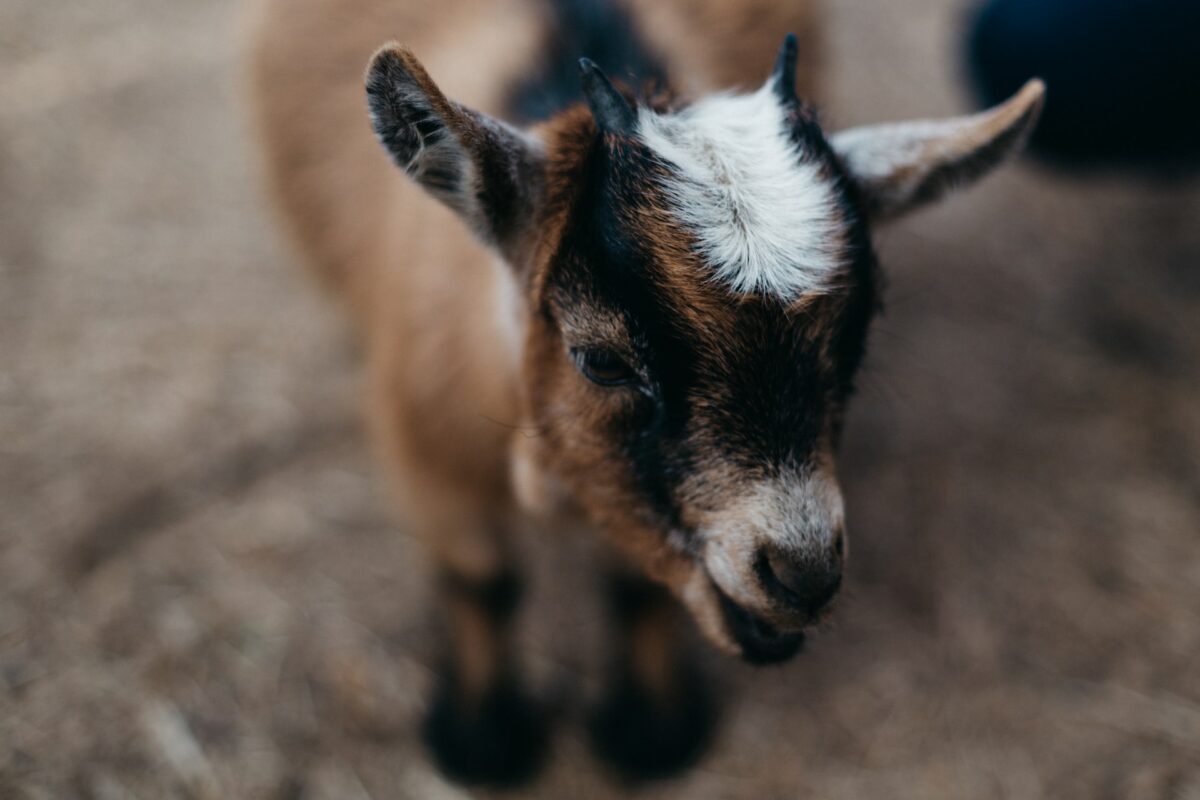
Usually, the kid gets a pair of teeth each week. When it reaches one month old, it has a complete set of eight incisors. These stay with them until the goat becomes one year old.
A mature goat will receive 32 new teeth when the old teeth fall out. Out of these 32 teeth, 8 are lower incisors, and 24 are molars. On the front upper jaw is a hard dental pad instead of teeth.
Baby Goat Food
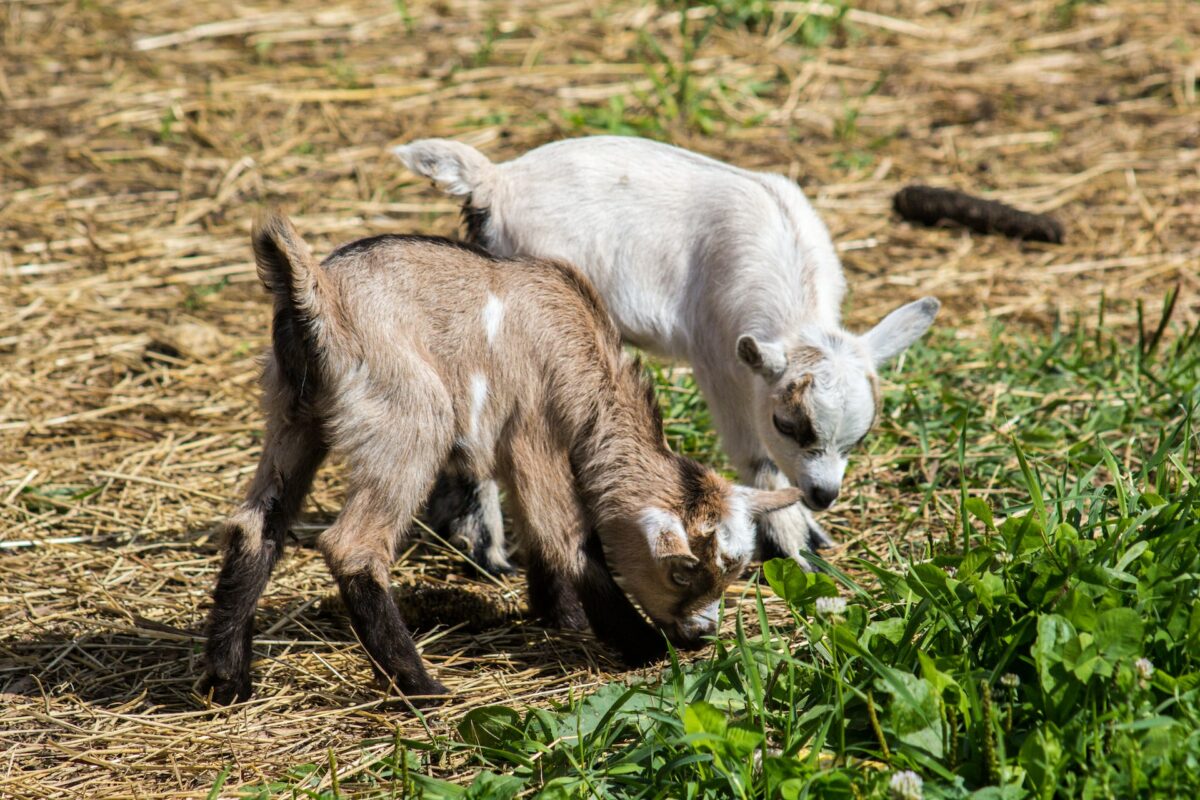
Just like all other mammals, the kid must also be fed by her mother through nursing. The mother goat feeds their kids for about two and a half months (75 days).
As baby goats need more nutrients to develop further, a healthy diet is necessary. Therefore their diet will typically consist of 5% goat feed grain, 80% of top-quality hay, and 15% consists of weeds, pasture, and hay pallets.
Goat milk is the best source of food for the kid. At one week old, it starts supplementing its milk diet with grains as well.
You should not give certain things like citrus fruits, onion, garlic, any caffeine source, or chocolate to the baby goat. These types of food will upset the kid’s rumen badly. Also, don’t give moldy grain to the kid; it can make them very sick.
Baby Goat Meat
Like the mature goat, many people prefer to eat the baby goat called the mutton, cabrito, or capretto. The taste of is like that of spring lamb meat.
Digestive Physiology Of Kid
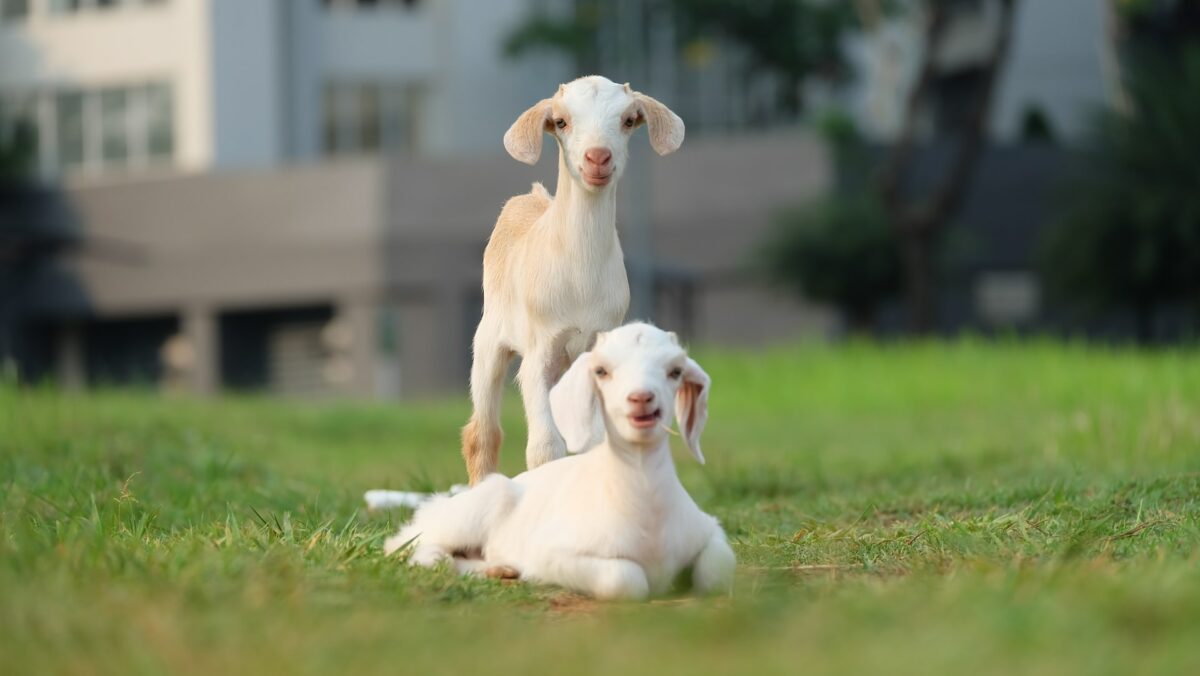
The digestive physiology of a kid resembles that of a monogastric animal because the baby goat is a ruminant. The digestion of milk starts in the abomasum, and then the milk bypasses the rumen by the reticular esophageal groove closing during suckling.
When the kid is born, the rumen is undeveloped. With time, the kid starts eating solid food, and thus, the size of the rumen increases. As a result, it becomes capable of absorbing more nutrients from the food.
How Baby Goats Show Affection?
Baby goats like human presence and like to be petted but not like the dogs that want a pet on their backs. Instead, they like to be patted on other body parts. Baby goats will keep following you on a walk wherever you go.
4 Amazing Facts About Baby Goat
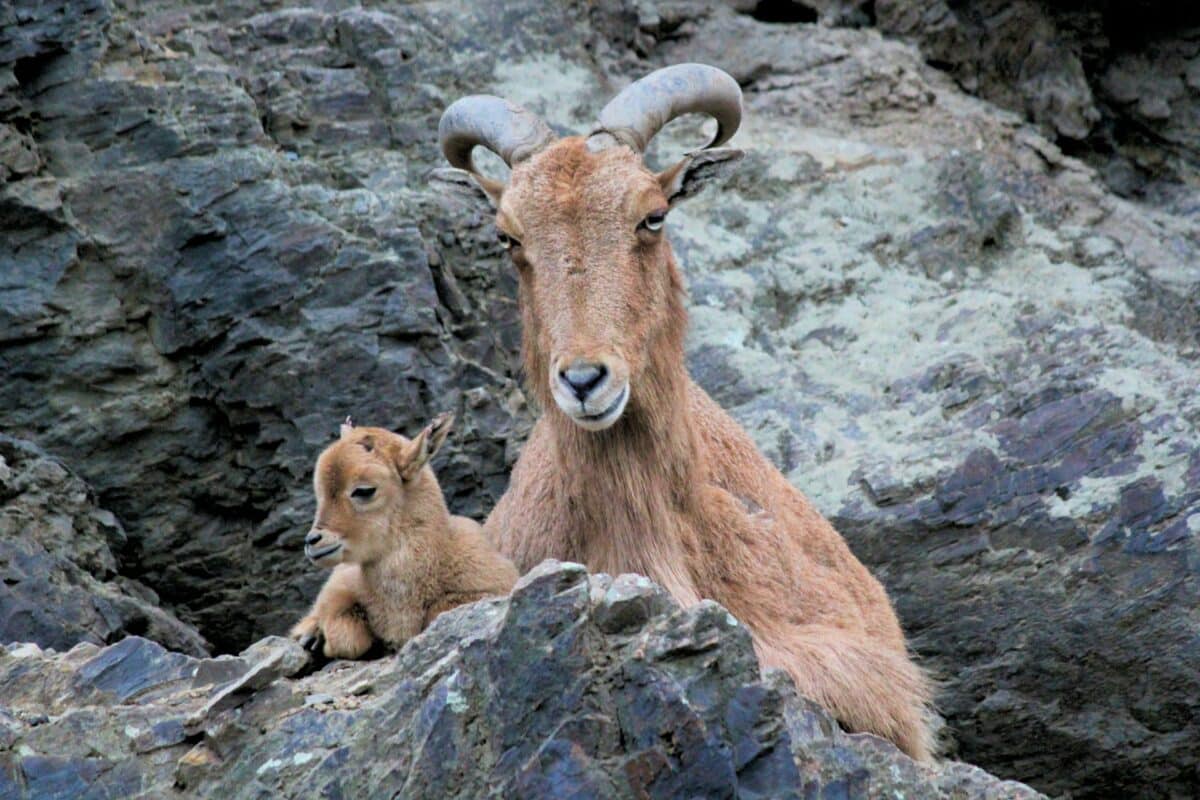
Baby goats are unique. These specific facts about them will no doubt fascinate you, let’s take a look at them:
#1 Baby Goats Can Stand Within Few Minutes After Birth
If the kid is born healthy, it starts walking within minutes of its birth because it is already fully developed. Goat kids are very active. They quickly learn how to run, and within a year, they start playing, jumping, and running efficiently.
The favorite activities of baby goats include playing with other kids in the herd, jumping from cliffs, hills, and rocks, and on the hay bales.
#2 Goats Have Accents
Baby goats are active and clever. They can make a distinct voice which is called “bleats.” Through their calls, they inform you that they need something. Their sounds are primarily used to identify the region they belong to. Kids have a regional accent that sets them aside from kids from other regions.
#3 Goats Are Born with Rectangular Pupils
The kids are known for avoiding becoming the prey of other animals because their pupils are shaped in such a way that they have excellent peripheral vision. Therefore in the animal kingdom, kids are famous as the baby who is capable of escaping all sorts of danger. It’s kind of like their superpower.
The rectangular pupils allow kids to view the surroundings in a wide range in order to see every place in the field to avoid danger. Their beautiful rectangular pupils also enable them to see even in the dark, allowing more light to enter their eyes.
Not all animals can look in many directions all at once, but the kid is capable of this. This is only thanks to their distinguishable pupils. Therefore whenever any threat is near, it will be sensed immediately by a kid.
This shows that baby goats have exceptional qualities that differentiate them from others creatures.
#4 Goat Kids Have Four-Chambered Stomachs
Baby goats are herbivores meaning they depend on plants, including grasses, for their food. The baby goat has a four-chambered stomach that quickly absorbs the nutrients and energy from the available food.
Even though baby goats cannot chew the food properly, their four-chambered stomach absorbs the nutrients and makes it possible for them to grow healthy.
The kid swallows food without adequately chewing it. When it reaches the stomach, this food is broken down into much smaller pieces by the microorganisms already present in their four-chambered stomachs.
Thus as the kid continues to scavenge for more food, their stomachs are busy digesting the food properly.
Taking Care Of Baby Goats
Just like a newly born of any other living organism, the goat kid also requires proper care and nourishment to ensure that they grow properly. For this, one should consider the following:
- Provide at least 10 square feet of shelter space to each kid.
- Let the kid spend time with the mother goat to strengthen their bond.
- If there are older goats that are aggressive, keep the kid away from them.
- Ensure you provide the child and mother goat with clean bedding, warm space, and draft-free shelter.
- Ensure the diet you provide to the baby goat consists of 15% hay pallets, weeds, and pastures, 5% grains, and 80% best-quality hay.
Ideal Environment For A Kid
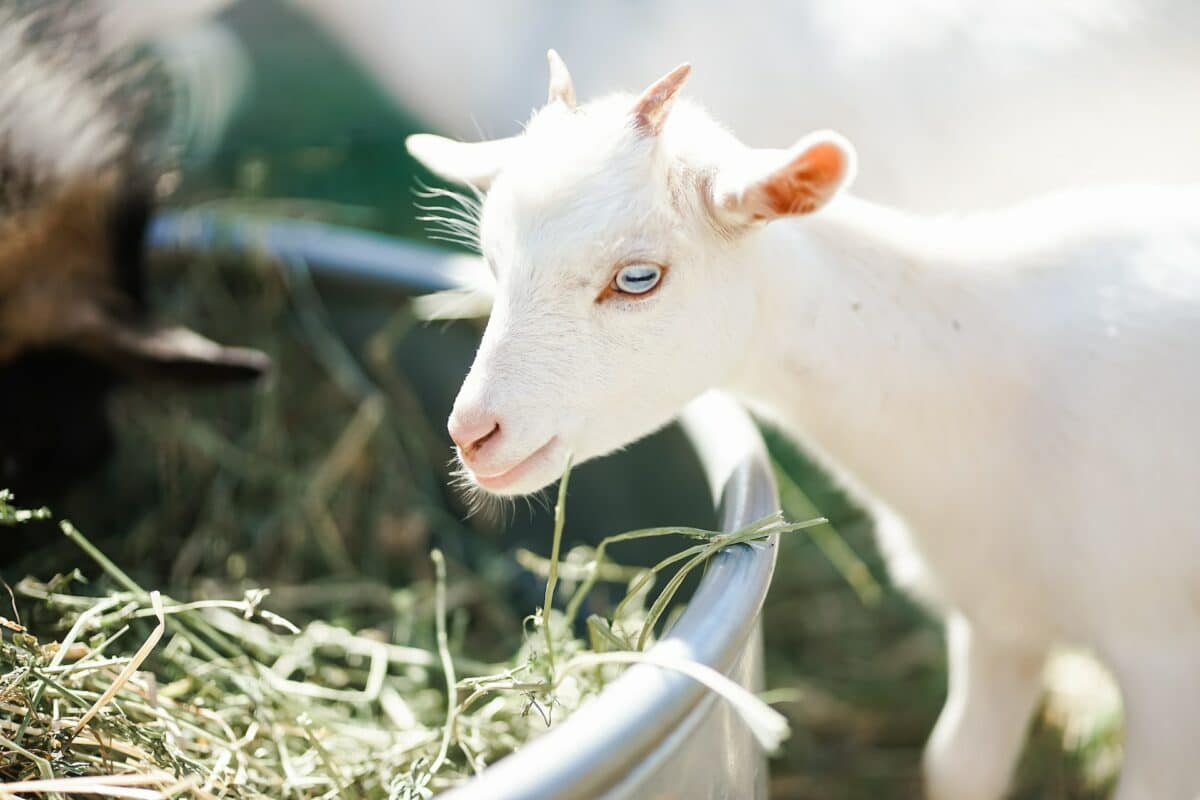
A healthy environment for the baby goat is one in which no factor can cause harm to the kid. The ideal setting for kids consists of a dry, draft-free, and warm shelter. The bedding must also be clean and pollutants free. In warm weather, creating a three-sided barn makes the space well-ventilated.
If there is any dirt, the best solution is to cover it with wood shavings or hay to make a comfortable bed for the kid.
Make sure to clean the ground properly and ensure there is no waste, including manure, left in their shelter. Not all plants are edibles for the goats, and some are poisonous, like rhododendrons or azaleas. If you find any such plant near the shelter or in the pasture, remove it straight away.
To make the kid healthy in the long run, let the kid play with other baby goats in the herd so that they can enjoy a happy and friendly environment.
Raising Baby Goats In Winter
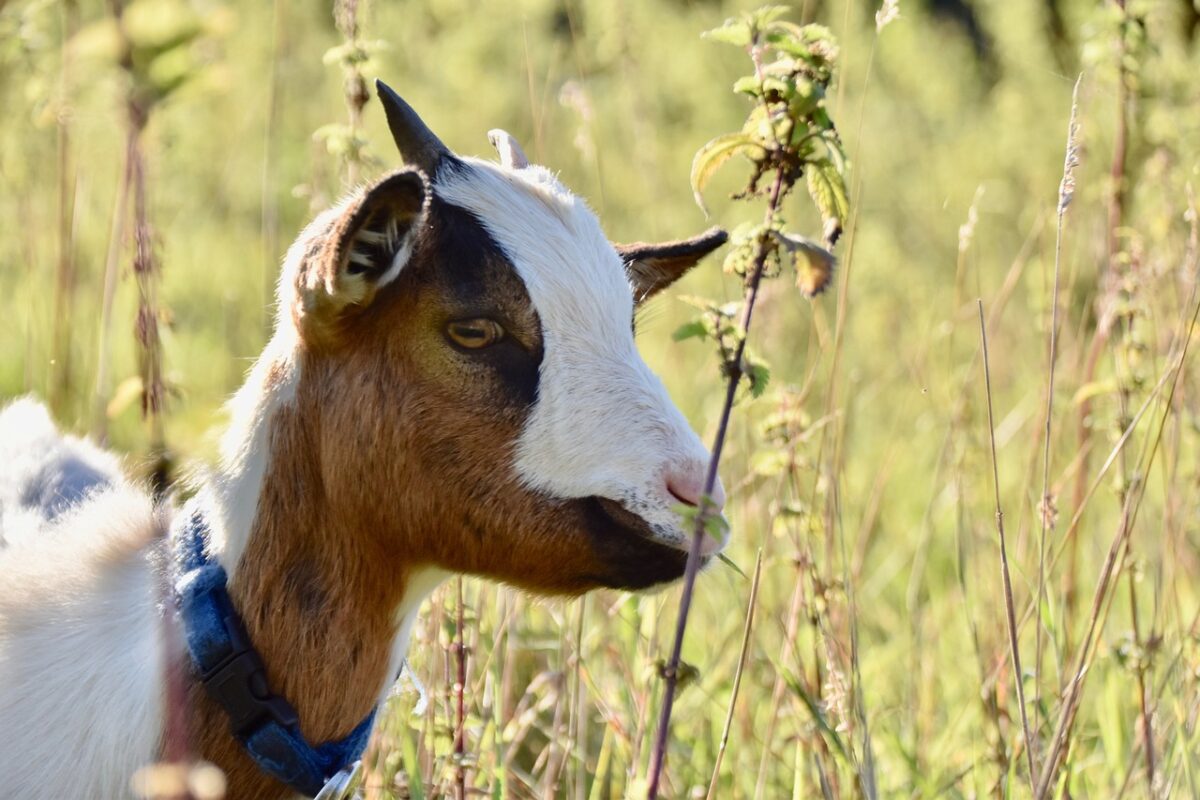
When the baby goat is born, its body is not developed in such a way to cope with the cold weather. Therefore in winter, it is even more essential to take proper care of the them.
- They can tolerate cold weather when well-fed and dry in a good shelter.
- If you have a domestic goat, you must account for the possibility that an adult goat will give birth.
- During kidding, make sure to provide a place that has no wind and is well-bedded.
- If you are breeding goats, it will be helpful for you to install a camera in your barn to keep observing the goat and the kid.
- To dry the baby goat, you can use a hair dryer to dry and warm up the kid quickly.
Health Issues Of Newly-Born Goats
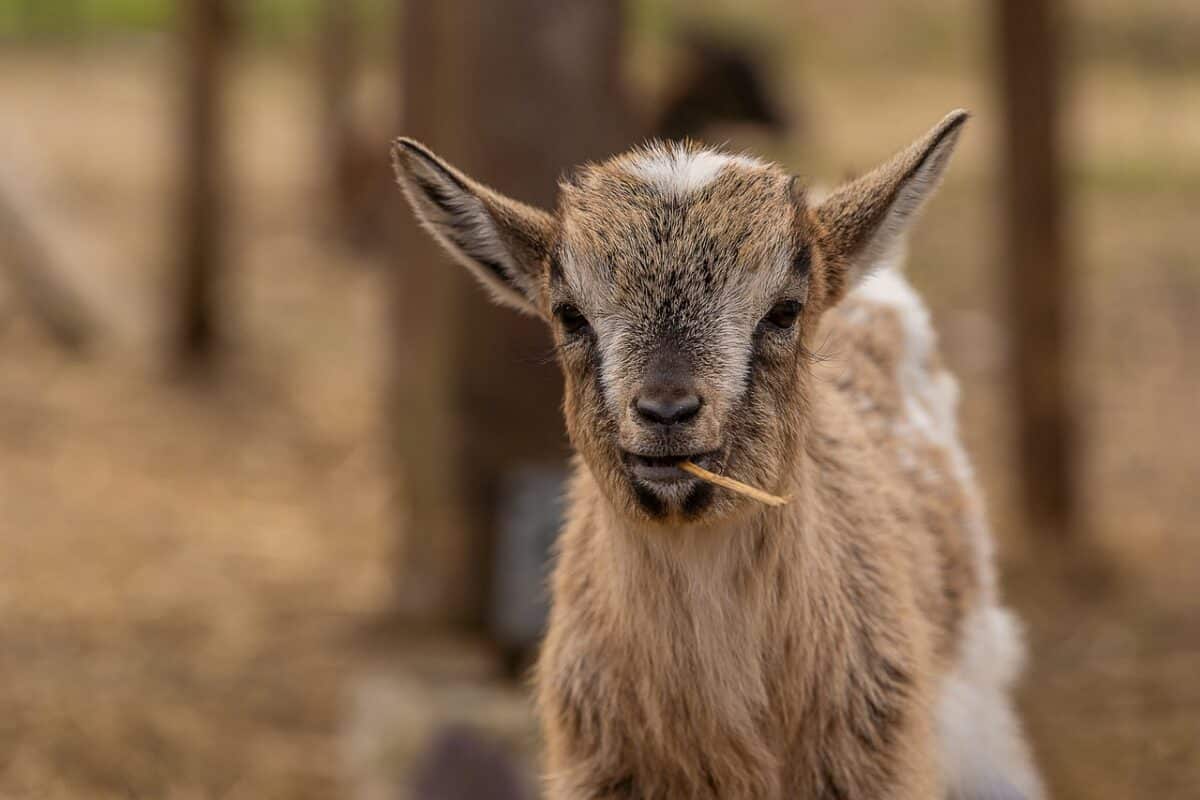
Sometimes the baby goat suffers from health issues just after birth, and sometimes the kid fails to develop into a healthy goat. The most common diseases seen in baby goats are the ones mentioned below:
- Premature kid
- Constipation
- Congenital disabilities
- Dehydration
- Neonatal Diarrhea Complex
- Thiamine deficiency
- Colostrum
- Weak kid syndrome
- Pneumonia
- Worms
- Coccidiosis
- Interstitial pneumonia
Some other common diseases in baby goats are selenium deficiency,
Urinary calculi, vitamin and mineral deficiency, Joint Ill, floppy kid syndrome, and enterotoxemia.
Methods To Prevent Illness In Baby Goats
Here are some practices to keep the baby goat safe from diseases and ensure their health and happiness.
- Perfect management practices
- Clean and dry the space regularly
- Avoid congestion
- Remove poisonous plants from near the shelter
- Provide food that is nutrient rich
- Let the baby goat drink clean water
- Allow the kid to spend time with their mother
What Does Baby Goat Poop Smell Indicate?
A healthy baby goat poop doesn’t smell at all. If the kid’s poop smells, it indicates a severe problem.
When a baby goat poop has a foul smell and is dark colored, it is the symptom of enterotoxemia, which causes discomfort and pain to the kid.
Frequently Asked Questions

How are baby goats born?
The mother goat prefers to give birth in a dry and sheltered area because the first twenty-four hours after birth are very crucial for the kid’s survival. Therefore, to ensure the maximum possibility of kid survival, the goat does her best to find a safe place. A mature goat can give birth to six kids at a time, but typically two kids are born yearly; triples and twins are also common.
What are baby goats called?
Interestingly the baby goat is called a kid and got this title before the human babies.
The Final Words

| Baby Goat |
| A Baby goat is called a kid. |
| Baby goats have four chambered stomachs. |
| A baby goat likes to play with other kids in the herd. |
| Baby goats have rectangular shaped pupils. |
| A kid is able to stand almost straight after birth. |
| Their pupils help them to keep themselves safe from predators. |
| A dry, well cleaned and ventilated space with clean bedding is ideal for baby goats. |
A baby goat is an adorable animal with many characteristics that allows it to be differentiated from other living creatures. Baby goats are also known as kids, and you should provide them with an appropriate environment. It needs to be dry, well-cleaned and ventilated to make them happy and healthy.
Like all other mammals, baby goats are fed by their mothers for two and a half months. They start eating solids after one or two weeks of birth.
They swallow food without chewing much as their stomachs are four-chambered, so the stomach does the remaining task of breaking down food into nutrients and energy.
Kids like to play with other baby goats in the herd. Baby goats are active, and their rectangular pupils help them keep themselves safe from predators, allowing them to see large areas at once.
Thank you for reading this article! If you enjoyed learning about this cute little thing we’re sure you’d like to know more about their cousins that also belong to the bovidae family: The Top 10 Animals with Horns.
Join our Forum for free today!



